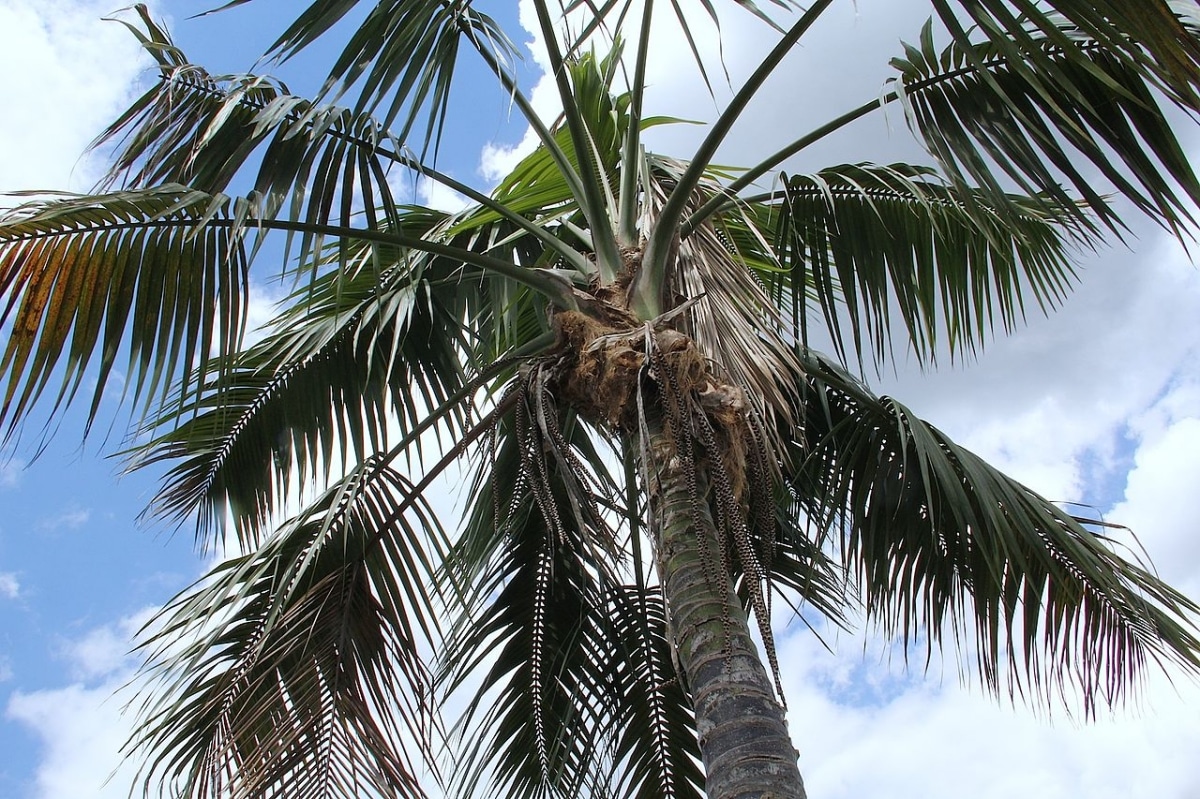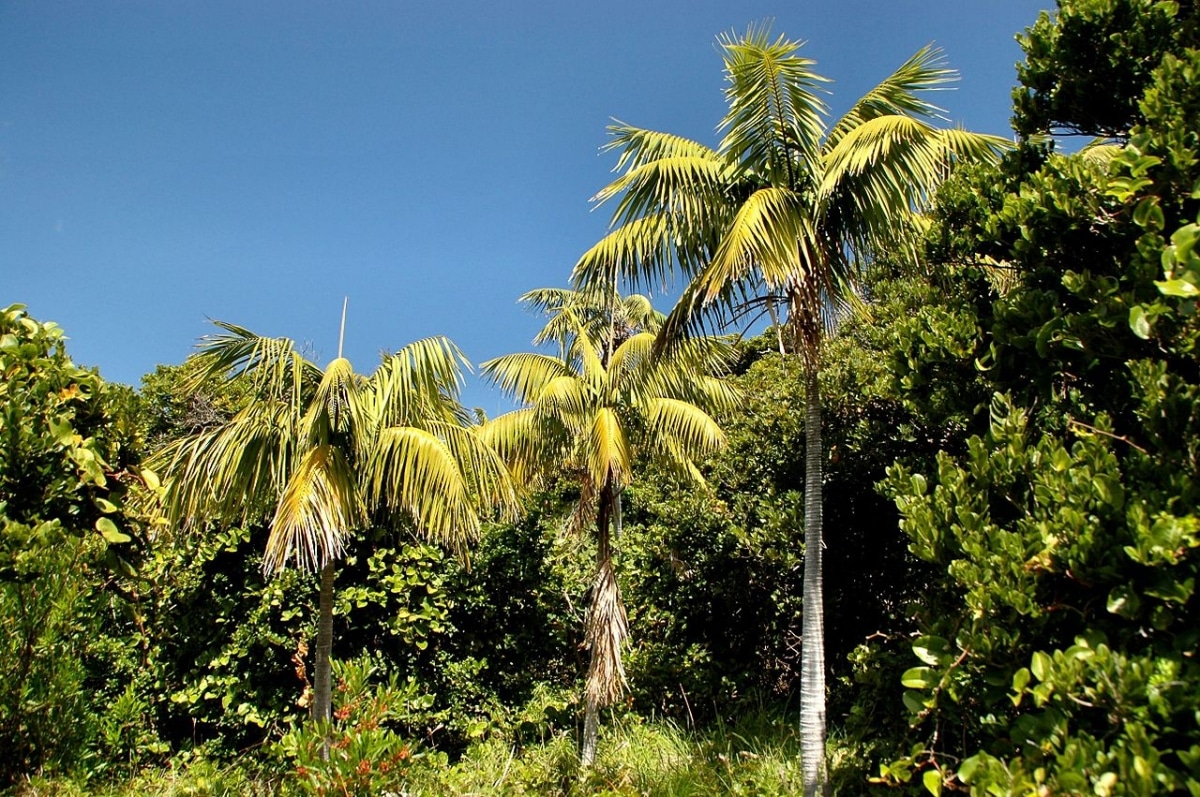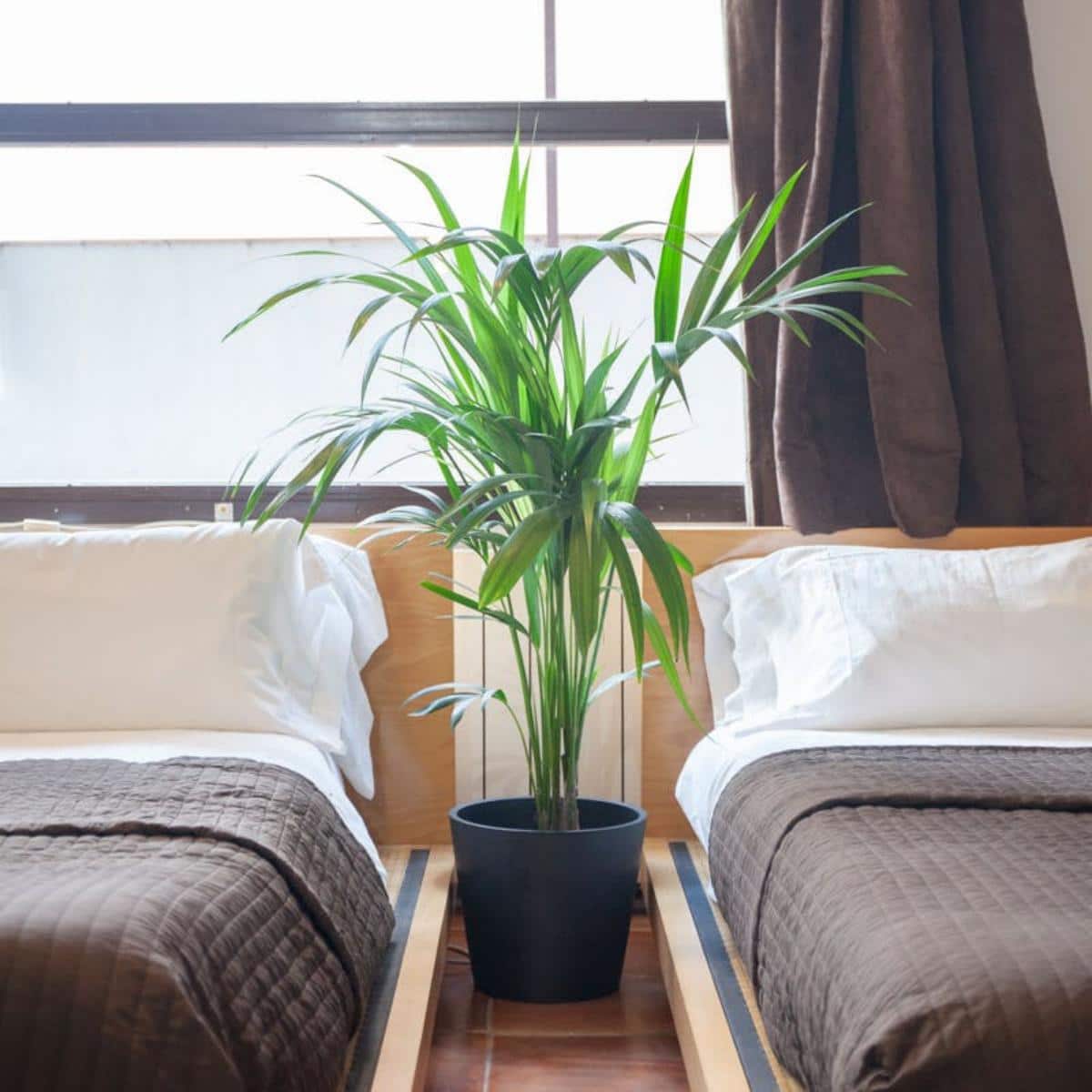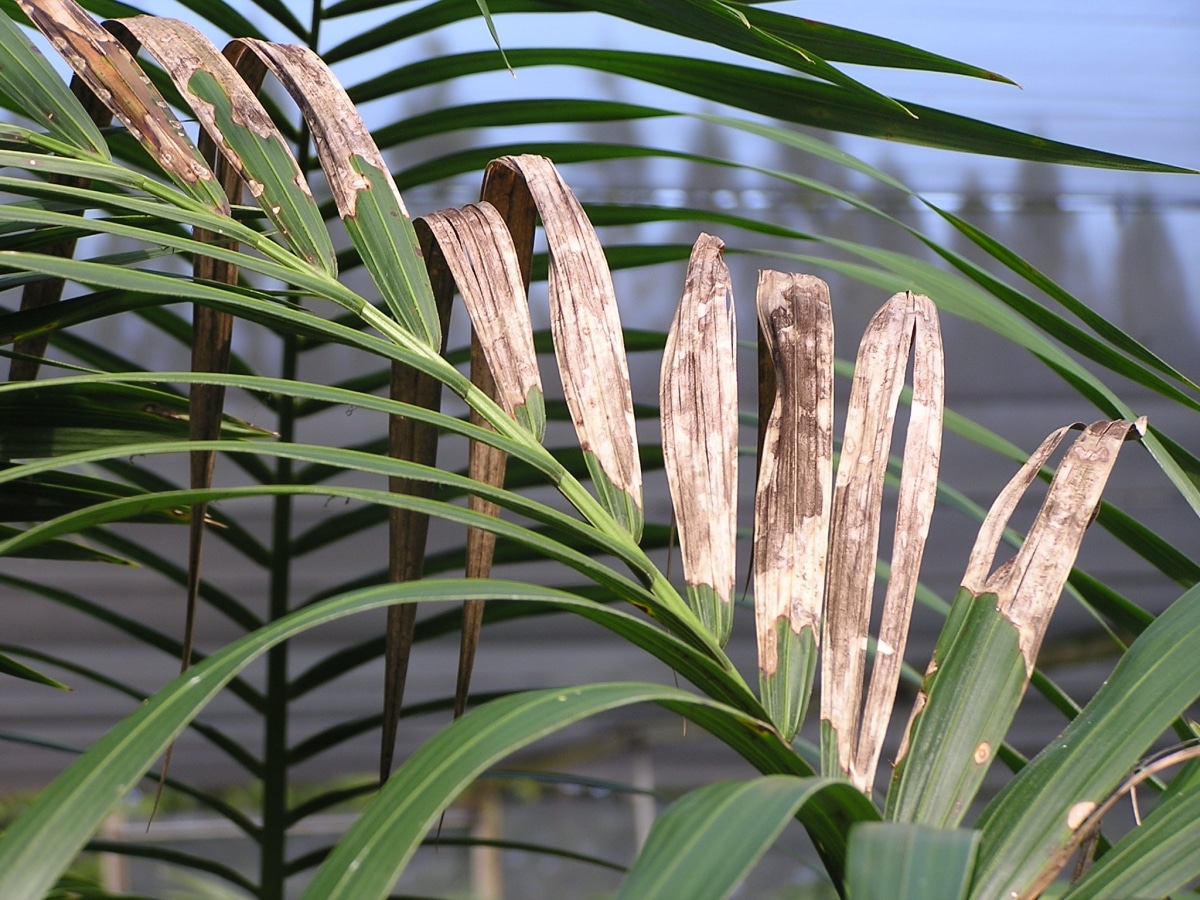
Image - Wikimedia / Peter A. Mansfeld
Kentia is an exceptional palm tree. With a thin trunk and dark green leaves, it can easily look good almost anywhere. But, although it is grown a lot indoors, it is important to say that because it is able to withstand frosts (weak, yes) it is highly recommended to plant it outside all year long if the weather allows it.
Its growth rate is slow. For many too slow. I myself have one that removes only one or a maximum of two new leaves each year, which adds about 2-3 centimeters in height. But that is precisely what encourages many people to cultivate it. However, What are the cares of kentia? Is it as easy to maintain as it is claimed?
Kentia characteristics

Image - Wikimedia / Flickr upload bot
First of all, it is very important to know the palm tree, since although we see it in a pot, with a size of 1 or 2 meters at most, which is how they are usually sold, we have to think that it can grow to between 10 and 15 meters in height by about 13 centimeters wide. Of course, when it is grown in a pot it is practically impossible for it to measure that much; in fact, the normal thing is that it stays in about 3 or 4 meters at most.
On the other hand, we have the leaves. These are pinnate, dark green, and almost flat. They grow to about 3-4 meters, but, again, if the palm tree is in a pot at most they will reach 1 or 2 meters long. Its color is dark green, but in adult specimens that are exposed to the sun it tends to be lighter.
Once it reaches adulthood, blooms. The flowers are grouped in inflorescences, which sprout from between the leaves. And if they are lucky and they are pollinated, they will produce fruits that will be green at first, then brown and then reddish. When they finish maturing, they will measure about 2 centimeters, and will contain a single seed.
And having said that, how do you stay healthy? Let's separate it.
Kentia palm tree care
La Kentia, whose scientific name is Howea forsterianaIt is a palm tree that, although it does not seem like it, is quite grateful. It is not a plant that has to be pampered too much, since in fact if we did it it would surely spoil. For this reason, we recommend that you keep the following in mind:
Location
Since it lives well both inside and outside the home, it is advisable to find a place where it will grow properly:
- Interior: the room you are in must be bright. In addition, there should be no drafts since otherwise brown spots would end up on leaves and trunk due to environmental dryness.
- Body exterior:: If you choose to have it in the garden, find it a place protected from the sun. Young specimens and those that are not acclimatized dry out very quickly when exposed directly to the sun.
Irrigation

Image - Be.Green
You have to use rainwater, or failing that, water that could be drunk without problems if you wanted.. Why? Because if we use one that has a lot of lime for example, the leaves could turn yellow due to the lack of nutrients (iron, manganese), apart from the fact that over time we would see little white dots -the lime- in the soil, and in the pot if it is which is planted in one.
The frequency of irrigation will vary depending on the season of the year, the weather, etc. But in general you have to know that during the summer you will have to be a little more aware of irrigation than winter, since the land takes less time to dry as a result of high temperatures.
Now, How often to water? About twice a week in summer. The rest of the year it will be enough once every 15 days approximately. At the time of doing it, you have to pour water until all the earth is soaked; and if it had a plate underneath, you should drain it after each watering.
Humidity
Humidity is a problem that should concern us if it is indoors, or if we have it in the garden and the environment is dry. But luckily it has an easy solution:
- At home: during the summer its leaves can be sprayed with distilled or rain water, once a day. Another option, for the rest of the year, is to place other plants or containers with water around it.
- In the garden: it can be sprayed once a day, ideally at dusk as this is when the sun is not as intense and allows the water to take longer to dry.
Subscriber
Watering is as important as fertilizing. For this reason, both in spring and summer you have to pay the kentia, using specific fertilizers for these plants, or with compost or mulch.
Transplant
Transplant it must be done in spring, but only if:
- is healthy: that is, if it has no trace of pests, suspicious spots, etc.
- It has rooted well: this can be seen if the trunk is pulled up but without removing it from the pot. If the earth bread doesn't crumble, the plant needs a change. Another option is to look for roots sticking out of the drainage holes.
If we see that you do need more space, we will do it in the spring, following this step by step:
Pot change
- First, we will choose a pot that is about 10 centimeters wider and taller than the one you are already using.
- Then, we will fill it up to half more or less with cultivation substrate, for example coconut fiber with peat and perlite in equal parts, or universal substrate with 30% perlite.
- Then, we extract the plant from its old pot, and we introduce it into the new one. If it is low or high, we will add or remove dirt.
- Finally, we finish filling and water.
Plant in the garden
- The first step is to make a hole of about 50 x 50 centimeters in a place protected from the sun.
- Afterwards, it is filled with mulch (or similar) mixed with 30% perlite more or less halfway.
- The palm tree is then removed from the pot and inserted into the hole. In the event that it is very high or very low with respect to the ground level, we will proceed to remove or add more substrate.
- Finally, the hole is filled and watered.
Pests
It is basically affected by two: Red spider and mealybugs. The first is a very small, red mite that produces its own cobwebs (hence it is known as a spider even though it is actually a mite).
If we talk about mealybugs, there are many types: cottony, ribbed, limpet shaped… But they all like to hide on the underside of the leaves to feed on the palm tree sap.
Fortunately, they are easily removed with diatomaceous earth (for sale here), or even cleaning the plant with mild soap and water.
Kentia plant diseases

Image - Flickr / Scot Nelson
Diseases are mainly caused by mistakes we make in their cultivation. For example, overwatering will lead to the appearance of spots on the leaves. If these are gray, we would talk about powdery mildew, but if they are brown and extend from the tips and further to the margin of the leaf, it would be anthracnose.
If we see necrotic spots on the beam, which are more or less rounded at first but end up merging with each other, then it is possible that it is fake rust, whose scientific name is Graphiola sp.
The treatment consists of reducing the risks, and treating the palm tree with fungicide (for sale No products found.).
Rusticity
The kentia resists up to -3ºC, if they are specific frosts.
Enjoy your kentia!